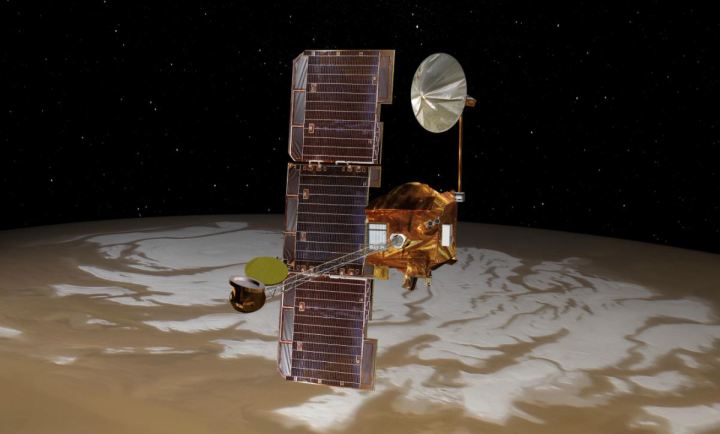
This week marks the 20th anniversary of the launch of NASA’s Mars Odyssey spacecraft, which has been in orbit around Mars since 2002. That makes it the longest-lived spacecraft sent to Mars, and it continues its work observing the Martian surface.
One of Odyssey’s major discoveries was detecting subsurface ice on Mars. It detected ice below the shallow surface of the planet, and these readings were later confirmed by the Phoenix lander.
“Before Odyssey, we didn’t know where this water was stored on the planet,” said Project Scientist Jeffrey Plaut of NASA’s Jet Propulsion Laboratory in Southern California, which leads the Odyssey mission, in a statement. “We detected it for the first time from orbit and later confirmed it was there using the Phoenix lander.”
Locating ice on Mars is pivotal for two reasons: Firstly, to understand the history of water on the planet and therefore if it could once have supported life, and secondly, to enable future crewed missions to the planet.
Other achievements Odyssey has been a part of include unraveling the composition of Mars, with a global map made using its Thermal Emission Imaging System (THEMIS) instrument. Not only did this create a map of the surface, but it also gave information about what the surface was composed of such as rock, sand, or dust.
The orbiter data has also been used to help select landing sites for Mars missions. THEMIS has identified hazards like boulders to be avoided, and its ice maps could be used to pin down a landing site for an eventual crewed mission.
“In the past 40 years Mars has gone from a red dot in the sky to a world we have come to know almost as well as our own,” said Philip Christensen, THEMIS lead at Arizona State University, in a statement. “Mars Odyssey and THEMIS have played a major role in that transformation and it has been a great privilege to have been part of the exploration of Mars.”
Odyssey is still in operation and has enough propellant to last until 2025. It is expected to continue its work observing the planet’s surface.
“Mars is a very dynamic and changing place, so we hope that THEMIS and Odyssey will continue to observe the planet for many more years to come,” said Christensen. “Exploration always has surprises, so even after 20 years we never really know what to expect in each image we take.”



